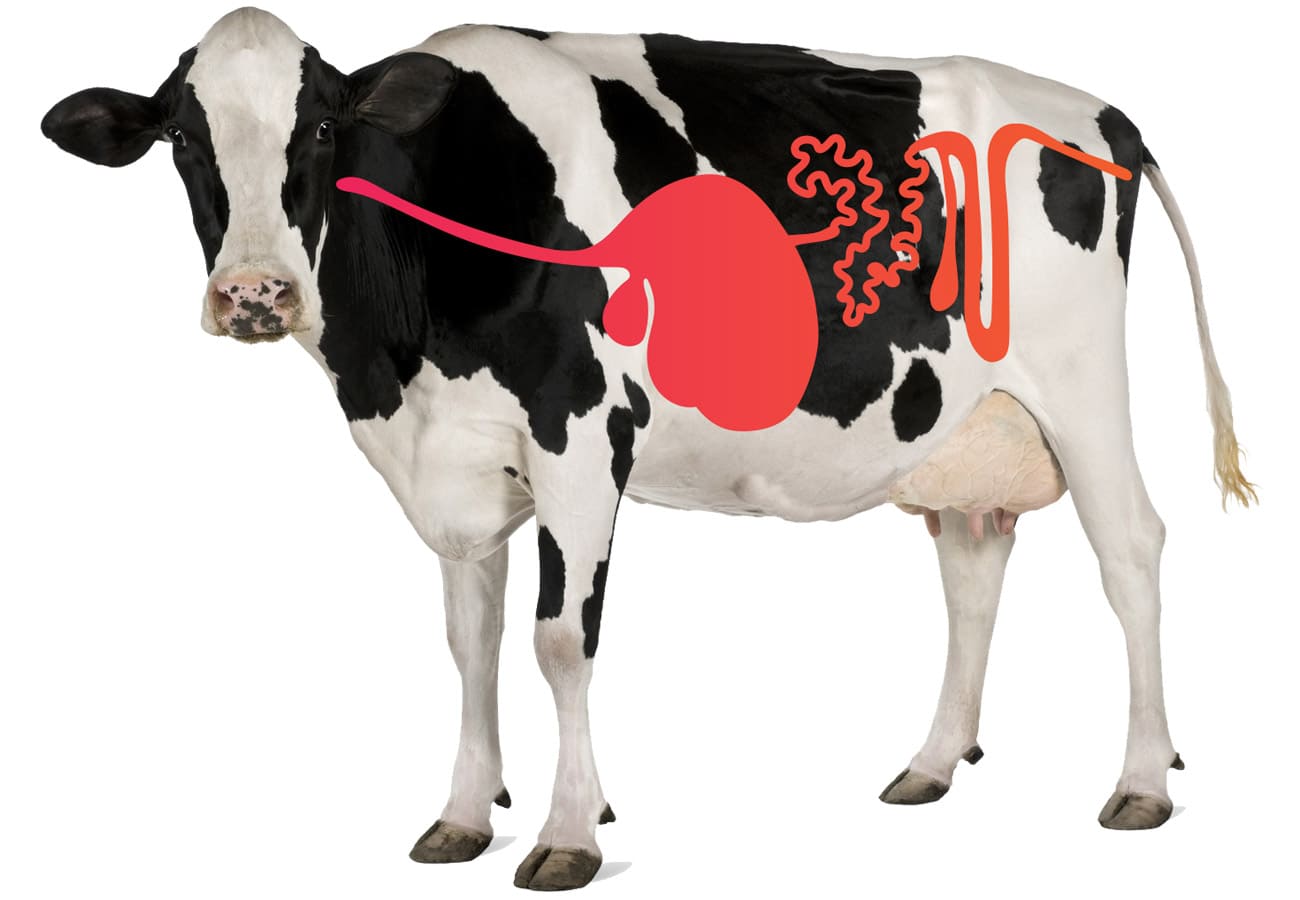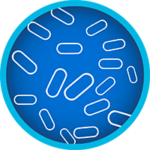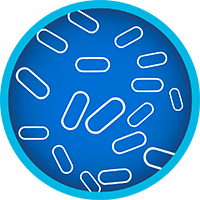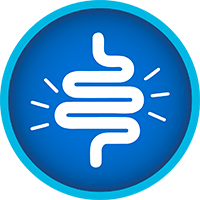
GUT CHECK PROGRAM FOR RUMINANT
What are the factors that are affecting the gut health of your cattle?
Managing gut health to maintain optimum feed efficiency, growth rate and production standards is essential for beef and dairy cattle production. The interplay between the epithelial, immune and bacterial cells that line the stomach makes management of feed, infection and environmental stress critical to optimizing health and performance.

NUTRITIONAL STABILITY
Solutions

Oxidation
Auto-oxidation is an irreversible process by which molecular oxygen combines with nutrients in an ingredient or finished diet creating rancidity and decreasing feed quality. Aside from the reduction in feed palatability and quality, oxidation also has major impacts on gut and liver health through the production of toxic compounds.

Mold and yeast
Mold and yeast are found in almost all feed and raw materials and depending on the climate they can act rapidly to reduce the nutritive value of the feed, produce harmful mycotoxins and disrupt beneficial bacteria in the intestine, impacting the performance of your herd.

Mycotoxins
Mycotoxins are toxic secondary metabolites that are produced by mold. They reduce the gut health of cattle by damaging and inflaming the intestinal tract and other key organs. Mycotoxin challenge often results in reductions in immunity, milk production and growth performance.

Undesirable flavor
Ruminants are highly sensitive to the unpalatable flavours that comes with many raw materials, minerals and medication used in feed. Flavouring has been used in ruminant production for over 150 years to ensure palatability, intake and performance during periods of stress, weaning and transition of diets.

Ketosis
Ketosis is a metabolic disease which usually occurs in cows in early lactation and is a deficiency of glucose (or sugar) in the blood and body tissues. If the amount of suitable carbohydrate in the diet is not enough to meet the glucose needs of the cow in full milk, the liver starts to manufacture glucose from other basic compounds in the body – usually fat reserves.
MICROBIAL PROTECTION
Solutions

Mastitis
Mastitis is caused by an inflammation of the udder tissue and usually occurs in response to a bacterial infection in the teat. The most common bacterial source for mastitis is contaminated bedding, but can also occur as a result of injury to the udder. Mastitis is a multifactorial disease and can be managed by eradicating the pathogen, optimizing the cow’s health and providing a clean environment.

Enteric pathogens
The majority of cattle deaths globally are as result of diseases affecting the digestive tract. Inflammation of the intestine and scouring caused by microbial pathogens are key causes of production loss and death in dairy and beef herds and need to be managed year round to prevent losses.
GUT STABILITY AND FUNCTION
Solutions

Poor epithelial development
Underdevelopment of the intestinal tract is often a result of stress or poor nutrition. If villi growth is compromised and the immune system underdeveloped, producers will see significant reductions in performance and low milk production.

Gut inflammation
Intestinal inflammation can occur from infection, poor nutrition or environmental stress and impairs the ruminant’s ability to absorb nutrients and achieve its genetic potential. The lining of the intestine can also become compromised and cause conditions such as leaky gut.

Rumen bloat and acidosis
Ruminal bloat and acidosis are two of the most common digestive disorders in feedlot and dairy cattle. Such disorders that are associated with changes in rumen fermentation and micro-organism imbalances and in the past have been mediated by ionophores. Recently however, the growing trends for antibiotic reductions has moved producers to look towards natural alternatives for control such as tannins.
ENVIRONMENT & WELFARE
Solutions

Water quality
Optimal water quality is of the highest importance for the health, welfare and production of cattle. Hard water and bacterial contamination can greatly reduce the performance of cattle and increase water excretion, causing litter problems and disease.

Lameness
Lameness is a significant welfare and productivity issue in ruminant production and encompasses a range of foot and leg conditions that hinder mobility and can be caused by disease, management and environmental factors. Depending on the severity, lameness is likely to have a large impact on the cow’s performance in terms of yield, longevity and fertility.

Poor fecal score
Evaluating manure can provide information about the gut health and rumen fermentation/function. Infections and disturbances to gut health will often result in abnormal faeces and monitoring the colour, content and consistency can help with early detection and prevention.

High nitrogen excretion
Improving nitrogen utilization in ruminants is an important goal for any cattle producing system. Imbalances in protein and energy in the diet reduce ruminal digestive efficiency, a common example being excessive ammonia absorption in the rumen, leading to urea production from the liver and excretion in the urine.
Program brochure request


















